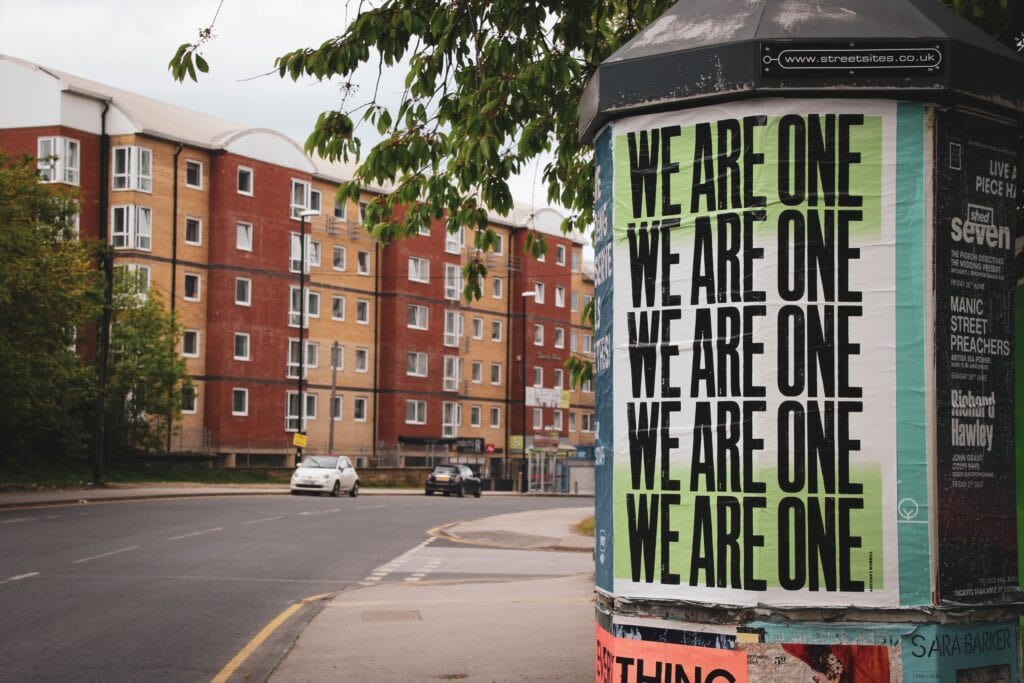Here today, there tomorrow, the day after tomorrow – wherever. Our society is becoming increasingly flexible, independent and globally networked. But despite all the freedom: as social beings, we also need community and belonging. How does this affect our living spaces? The new lifestyle between freedom and belonging is changing the demands on spaces, infrastructures and services. What is needed are more agile, adaptable and resilient structures that support the needed independence of the users as well as the assembly of new communities outside the nuclear family – like the model of co-living. Is this just a new trendy word for shared living, or an answer to the question of how we want to live in the future?
Connectivity, community, co-living
Co is cool! It seems as if the prefix has made its way into almost all areas of life in recent years: co-working, co-creation, co-working spaces, co-parenting and also co-living. However, there is much more behind the term co-living than just a trend. It describes the change in society and especially the change in the area of group formation, belonging and identity. According to the 2021 report “The art of coliving” by Gui Pedrix, co-living can be described as follows:
“The voluntary use of a residential structure that accommodates three or more biologically unrelated people who share major resources”.
The users of co-living spaces are diverse and range from digital nomads, students and start-up founders to young professionals. Most of the time, co-living users belong to the Millennial generation (born between 1980 and 2000) and use the flats temporarily in a certain phase of their lives – but not on a long-term basis. Regardless of whether they are digital nomads or students, the motivations for choosing to move into a co-living space can basically be traced back to the following factors:
- Community – “The feeling of being part of a community.”
- Connectivity – “The opportunity to learn and develop from others.”
- Cost of living – “Being able to finance your own four walls.”
- Flexibility – “Being able to finance your own four walls.”
- Service – “The security of a full-service carefree package.”
The special feature of co-living spaces is undoubtedly not only the fully-furnished micro-apartments, which differ from classic hotel rooms mostly through features such as a kitchen including accessories and a small dining area as well as more storage space but especially the high proportion of community spaces. Co-living thrives on community – or, as Lea Hermanns describes it via Poha House, on the feeling: you are not alone.
Despite temporary use, co-living providers invest in a lively and inspiring community – not only by offering suitable space but also through leisure offerings such as yoga sessions, after-work parties, joint cooking evenings, Ted Talks and much more. Shared experiences support the formation of team spirit, belonging and identity despite a high rate of change, independence and freedom. The fact that the search for community plays a major role, especially for younger generations, is no coincidence, but the result of more complex life courses with increasing geographical localizations.

The unlimited possibilities of the “global generation”
If you compare the life histories of different generations, the strong differences between the number of “homes” quickly become clear: whereas the post-war generation partly spent their entire lives in one place and was born into a geographically fixed community, younger generations, such as Generation Y (Millennials) or Z, change their environment in an unbelievably fast dynamic and with a new naturalness: to Spain for the Erasmus semester, to Australia for the work-and-travel experience, to Paris for the first job, to the Ruhr region for the second, and so on. The so-called “global generation” is characterized by a lifestyle of freedom, independence, diversity and increasing opportunities to shape their own lives. The challenge here is to find one’s own individual path in a seemingly limitless world of options, or to remain permanently on the search. Thus, adjectives such as disoriented, overwhelmed, incapable of making decisions or lonely are often ascribed to the “global generation” – certainly not unfounded but understandable on the basis of development. What is needed in particular in the world of unlimited possibilities? A new form of community beyond the original nuclear family.

Co-living and what is to come
The core of the co-living concept responds to the needs of the global generation. The local community, it is said, becomes a temporary family with intensive shared experiences based on the certainty that this moment is unique. The trend towards co-living spaces highlights the current problems of a housing market that in large parts no longer fits the current requirements of the users. There is a need for smaller private spaces and large shared common areas that allow for high flexibility and modular offerings according to individual needs. Co-living spaces are showcases of a new generation of housing that can be thought of even further. Because it is not only the global generation that needs new forms of community; older people or single parents could also be among the permanent target groups. In addition, co-living should not only be considered limited to buildings, but should also be extended to the surrounding environment. Co-living neighbourhoods with an extremely high number of co-spaces, for example in the form of neighbourhood offices for joint co-working, are just as conceivable as joint co-kitchens. The potentials of co-spaces are great, and the possibilities seem endless. It is time for a change from an “I” culture to a “we” culture with spaces that adapt to new needs and not vice versa.

In order to develop new future-proof living spaces and push the housing market towards the avant-garde, I dealt with the topic together with my colleagues in the Smart Urban Environments team in several innovation associations. Together with experts from the hotel industry, new business models for temporary living in the hotel industry are being developed in the “FutureHotel” network (see reading links). In the innovation network “Future Public Space”, the focus is on the interface between public and private spaces (see reading links). The different perspectives in interdisciplinary teams enable the development of diverse approaches for experimental, diverse living concepts for the society of tomorrow. We welcome any additions to our networks who bring further views and ideas.


